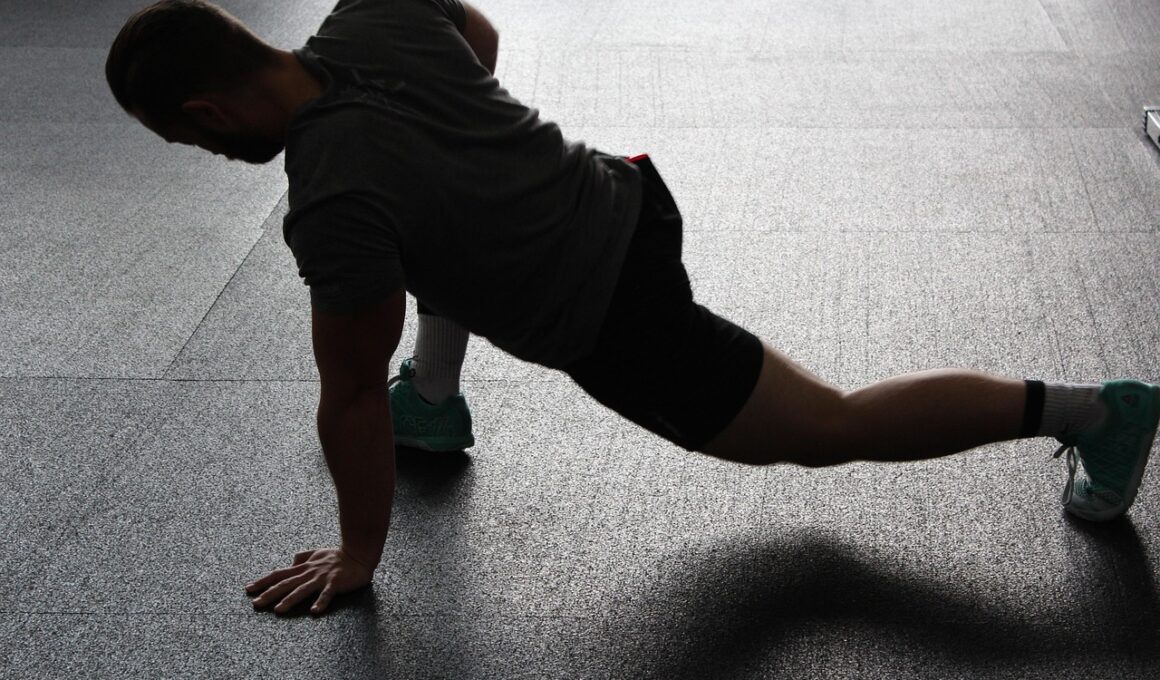The Link Between Warm-Up Duration and Workout Intensity
A pre-workout warm-up routine is an essential aspect of fitness that often gets overlooked. The duration of a warm-up significantly impacts the quality of your workout. Physiologically, warming up increases blood flow to muscles, raises core temperature, and enhances the elasticity of muscles and tendons. Typically, a warm-up can last ranging from five to fifteen minutes, which might seem trivial, yet research indicates that a longer warm-up can prepare your body for more intense training. When you invest time into warming up thoroughly, the muscles become more pliable and efficient, delivering better performance during the workout. Moreover, different types of exercises require different warm-up strategies. For heavy lifting, dynamic stretches can be beneficial. For cardiovascular activities, engaging in light aerobic movements helps prepare your heart and lungs. Ignoring this crucial phase may lead to injuries, reduced exercise performance, or fatigue. Therefore, spend time on the warm-up period tailored to your planned workout, and observe how it significantly improves your physical output and overall satisfaction with your exercise routine. Small changes can lead to profound results. Make sure to incorporate this into your fitness regime.
This leads to considering the balance between warm-up duration and workout intensity. To maximize your capacity, focus on the level of intensity you plan to give during your workout. Research indicates that individuals who perform longer warm-ups report higher levels of performance, particularly in strength training and high-intensity interval training. A suitable warm-up routine not only physically prepares your body but also mentally primes you for the task ahead. It creates a mindset of readiness and focus, leading to more effective workouts. Devoting sufficient time to a thorough warm-up allows for increased range of motion. This enables proper alignment, which is crucial for executing movements safely and efficiently, reducing the risk of injury. Furthermore, warm-ups can be personalized based on individual fitness levels, preferences, and goals. The right combination of activities can significantly enhance results. By understanding the effects of warm-up duration on overall performance, individuals can optimize their routines. Coupling intensity with appropriate warm-up duration is a smart approach. Plan your warm-ups based on workout intensity, ensuring that each session is productive and effective in achieving your fitness goals without compromising safety.
Moreover, understanding the physiological responses triggered by warming up helps to appreciate its importance. During a proper warm-up, the body starts releasing energy-boosting hormones like adrenaline. This process elevates heart rate and increases circulation, making muscles more responsive to work. Additionally, a warm-up promotes joint lubrication, allowing for better movement mechanics and fluidity during exercises. Flexibility is significantly improved as well. Adequate warm-up routines often include dynamic stretching, which not only prepares muscles but also enhances neuromuscular coordination. Improved coordination can lead to better performance for complex movements like squats or deadlifts. Engaging in low-impact activities such as jogging or brisk walking also enhances cardiovascular endurance. Research has shown that athletes engaging in proper warm-up routines often report enhanced energy and stamina during workouts due to the gradual acclimatization of the body. Furthermore, yoga and mobility exercises can also serve as effective warm-ups and help calm the mind, fostering better focus throughout the workout. Therefore, integrating different warm-up strategies can lead to improved workout efficiency and enjoyment. Incorporate variety in your warm-ups to suit your workout needs and personal preferences to maintain consistent motivation.
Personalizing Your Warm-Up
Personalization is a critical aspect of effective warm-up strategies. Individual differences can significantly affect warm-up requirements. Factors such as age, fitness level, and specific sports tend to demand distinctive approaches to warming up. Athletes should be aware of their body mechanics and what works best for them. For instance, those engaging in strength training may require more time on particular muscle groups. Alternatively, someone preparing for a cardiovascular-focused session might benefit from lighter activities that elevate heart rates gradually. Incorporating mobility drills focused on individual restrictions can be beneficial. Understanding one’s body can lead to more informed decisions regarding the elements incorporated into a warm-up session. Monitoring how you feel after implementing various warm-up routines can enhance the overall workout effectiveness. Keeping a workout journal can also track your warm-up impact on workout intensity and results over time. You may find distinct patterns showing which warm-up durations yield the highest performance levels for you personally. Always take the time to listen to your body and make the necessary adjustments to optimize your pre-workout warm-up routines in coherence with your specific training goals.
Furthermore, consistency plays a pivotal role in enhancing warm-up routines. Making a warm-up an integral part of your fitness routine will ensure it becomes a habit. Consistency aids in improving performance over time. As individuals develop familiarity with their warm-up protocols, they may find that they require less time to achieve optimal levels of readiness for workouts. The body learns to activate muscles and systems effectively and efficiently with repeated patterns. Moreover, tracking improvements in performance levels can serve as motivation. Establish a warm-up plan that incorporates flexibility, strength, and mobility work. Adding variety to routines can prevent monotony and keep workouts exciting while still allowing for progressive adaptations. It is also essential to maintain hydration and nutrition to maximize the warm-up’s effectiveness. Hydration supports optimal muscle function, while proper nutrition directly influences energy levels during workouts. By combining these aspects with dedicated warm-up time, individuals can experience enhanced intensity and enjoyment from their workout sessions. Emphasize the essential nature of warming up for sustained fitness gains.
Additionally, understanding common misconceptions about warm-ups can lead to more effective routines. Many believe that a quick stretch is sufficient before engaging in workouts. However, static stretching alone can inhibit performance and lead to injuries. Instead, dynamic stretching promotes flexibility while also preparing the body for movement. Developing a proper warm-up structure can include various movements that mimic upcoming workout activities. By incorporating sport-specific movements into the warm-up, individuals can increase muscle activation and readiness. Prioritize a combination of cardiovascular exercises, flexibility, and dynamic movements for the best results. For optimal warm-up selection, consider the nature of the planned workout. Time spent preparing can lead to substantial returns in performance. Reviewing scientific studies on warm-ups can provide further insights into effective strategies. Exercising intelligently and being attuned to one’s body can lead to lasting benefits. Ultimately, the goal is to optimize each training session and minimize the risk of injury through thoughtful warm-up practices. Implement these strategies to align workout intensity with appropriate warm-up durations.
Finally, the conclusion of this discussion underscores that an effective pre-workout warm-up routine is vital for achieving physical goals. As we discussed, the duration and structure of these warm-ups have extensive implications on workout intensity and overall performance. By understanding the physiological enhancements that arise from a well-structured warm-up, individuals can appreciate its significance better. Taking the time to personalize warm-up routines and being consistent in practice will yield rewarding outcomes over time. Be sure to include exercises that promote both flexibility and strength in your warm-ups while focusing on injury prevention. Following the steps outlined helps create a pathway leading to improved physical performance, increased confidence, and reduced injury rates. A good warm-up should always precede any workout, regardless of intensity or type. Implement the insights shared here in your fitness endeavors, and ensure a pre-workout warm-up routine becomes a non-negotiable aspect of your training. Embrace the science behind warm-ups and recognize the powerful link between warm-up duration and workout intensity to maximize your potential.


